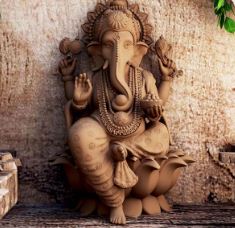
Indian music, with its rich heritage and profound cultural roots, encompasses a vast array of genres and styles. Among these, spiritual music holds a special place, offering a bridge between the human and the divine. This form of music is not just an auditory experience but a journey towards inner peace and enlightenment.
Historical Roots
The origins of spiritual Indian music can be traced back to the Vedic period (1500-500 BCE), where hymns from the Rigveda were chanted in complex melodies. These chants, known as sāma gāna, were designed to elevate the soul and connect with the divine. Over centuries, this evolved into classical forms like Dhrupad and Khayal, which are integral to Hindustani classical music.
In the South, Carnatic music flourished, deeply intertwined with spirituality. The compositions, known as krithis, often revolve around devotion to deities and the philosophy of life, drawing from texts like the Ramayana and the Mahabharata.
Key Elements
Ragas and Talas: The backbone of Indian music, ragas are specific melodic frameworks for improvisation and composition. Each raga is associated with particular emotions and times of the day, enhancing the spiritual experience. Talas, or rhythmic cycles, complement ragas, creating intricate patterns that resonate with the rhythms of the universe.
Instruments: Instruments like the sitar, tabla, flute, and tanpura are central to spiritual Indian music. The sitar, with its resonant strings, creates a meditative soundscape, while the tabla provides rhythmic complexity. The flute, associated with Lord Krishna, evokes a sense of serenity, and the tanpura’s continuous drone offers a harmonic foundation, enveloping the listener in a cocoon of sound.
Mantras and Bhajans: Mantras, sacred utterances, are chanted to invoke spiritual energy. Bhajans, devotional songs, are another vital aspect, often sung in praise of deities like Krishna, Shiva, and the Goddess Durga. These songs are typically simple in melody but profound in their impact, fostering communal harmony and personal devotion.
Spiritual Impact
Spiritual Indian music serves as a medium for meditation and self-realization. The practice of Nada Yoga, or the yoga of sound, uses music to achieve a heightened state of consciousness. This concept is based on the belief that sound vibrations can influence the mind and body, promoting healing and spiritual growth.
Listening to or performing spiritual music can induce a trance-like state, facilitating a deeper connection with the inner self and the universe. The repetitive patterns and cyclical rhythms mirror the natural cycles of life, creating a sense of continuity and timelessness.
Contemporary Influence
Today, spiritual Indian music continues to thrive, evolving with contemporary influences while retaining its core essence. Artists like Ravi Shankar and Anoushka Shankar have brought Indian spiritual music to global audiences, blending traditional forms with modern sensibilities. Festivals like the Kumbh Mela and Vrindavan’s Holi celebrations showcase this music, attracting devotees and music enthusiasts from around the world.
In the realm of popular culture, yoga and wellness communities have embraced spiritual Indian music for its calming and transformative properties. This resurgence highlights the timeless appeal of this genre and its relevance in the modern quest for peace and spirituality.
Indian music, steeped in history and tradition, offers a profound spiritual experience that transcends mere auditory pleasure. Spiritual Indian music, in particular, serves as a conduit for connecting with the divine, fostering inner peace, and promoting spiritual growth. This blog delves into the enchanting world of spiritual Indian music, exploring its historical roots, key elements, and enduring impact.
Historical Foundations
Spiritual Indian music has its origins in ancient times, with the Vedic period (1500-500 BCE) marking the beginning of this rich tradition. The sāma gāna, hymns from the Rigveda, were chanted to invoke spiritual elevation. These early chants laid the foundation for the development of classical forms like Dhrupad and Khayal in Hindustani music and krithis in Carnatic music, which are inherently devotional.
Core Elements
Ragas and Talas: At the heart of spiritual Indian music are ragas and talas. Ragas are melodic frameworks that evoke specific emotions and are often associated with particular times of the day or seasons. Talas are rhythmic cycles that provide a structured temporal framework. Together, they create a meditative and emotive soundscape that facilitates spiritual introspection.
Instruments: Instruments play a crucial role in spiritual Indian music. The sitar, with its complex resonances, the tabla’s intricate rhythms, the serene flute, and the harmonic drone of the tanpura all contribute to creating a spiritually charged atmosphere. Each instrument has its unique role in guiding the listener on a journey toward inner peace.
Mantras and Bhajans: Mantras are sacred chants believed to possess spiritual power. Bhajans are devotional songs that praise deities like Krishna, Shiva, and Durga. These simple yet profound compositions are essential for communal worship and personal devotion, often bringing a sense of unity and tranquility.
Spiritual Impact
Spiritual Indian music is more than an art form; it is a practice of Nada Yoga, the yoga of sound. This practice uses music to achieve higher states of consciousness and spiritual awakening. The repetitive patterns and cyclical rhythms found in this music mirror the natural cycles of life, promoting a sense of continuity and timelessness.
Listening to or performing spiritual music can induce a trance-like state, fostering a deeper connection with one’s inner self and the cosmos. This music’s ability to resonate on a spiritual level makes it a powerful tool for meditation and self-discovery.
Contemporary Relevance
Today, spiritual Indian music continues to thrive, blending traditional elements with contemporary influences. Renowned artists like Ravi Shankar and Anoushka Shankar have introduced this music to global audiences, while festivals such as the Kumbh Mela celebrate its enduring appeal. The rise of yoga and wellness practices in the West has also embraced spiritual Indian music for its calming and transformative effects.
Conclusion
Spiritual Indian music is a testament to the profound connection between art and spirituality. Its ability to transcend the mundane and touch the divine continues to inspire and uplift, offering a path to inner harmony and universal oneness. Whether through ancient Vedic chants or contemporary fusion, this music remains a beacon of hope and enlightenment in a fast-paced world.











